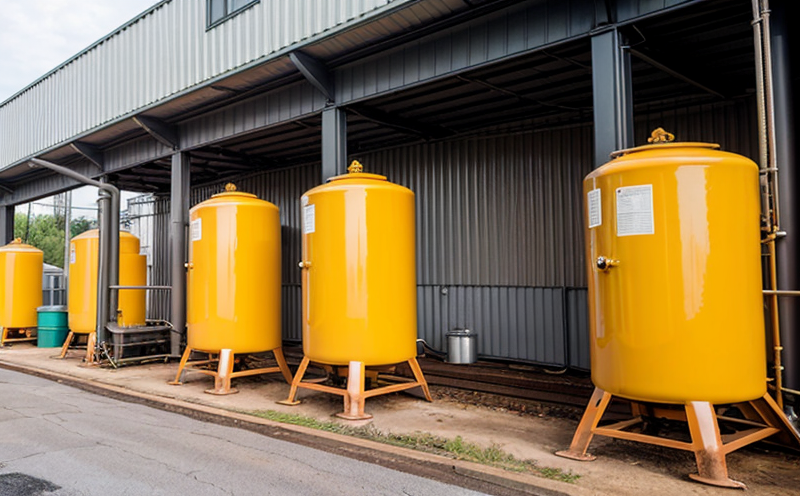Photobiological Safety Lamp Assessment Test
In today's industrial manufacturing and processing environments, ensuring that lighting systems are photobiologically safe is paramount. The Photobiological Safety Lamp Assessment Test plays a critical role in safeguarding workers from potential hazards associated with ultraviolet (UV), visible light, and infrared (IR) radiation. This service ensures compliance with international standards, thereby protecting human health and safety.
The Photobiological Safety Lamp Assessment involves a comprehensive evaluation of lamps and luminaires to determine their compliance with specific photobiological criteria. The test assesses the potential for harmful exposure to light sources, which can vary significantly depending on the type of lamp used in different industrial settings. For instance, certain UV lamps are commonly used in sterilization processes but must be carefully controlled to avoid unintended risks.
The testing process typically involves several stages: initial assessment, sample preparation, instrumentation setup, and final analysis. During the initial assessment, the lamp's specifications are reviewed against relevant standards such as ISO 22712 to ensure that it falls within the scope of the test. Once approved for testing, the specimen is prepared according to strict protocols. The lamp is then placed in a controlled environment where its emitted light is measured using advanced spectroradiometers and photoreceptors.
The instrumentation used for this assessment includes specialized equipment designed to measure various parameters including irradiance, spectral power distribution (SPD), and the relative photobiological risk index. The test results are then compared against established safety thresholds set by regulatory bodies like the European Commission's Commission Regulation (EU) No 778/2014 and the American National Standards Institute's ANSI Z9.11. These thresholds define the maximum permissible exposure levels for various wavelengths of light.
The outcome of this assessment is a detailed report that outlines whether the lamp meets all photobiological safety criteria. This information is crucial for quality managers and compliance officers as it helps them make informed decisions about purchasing and deploying safe lighting solutions. Additionally, R&D engineers can leverage these test results to refine their designs and improve product reliability.
The importance of this service cannot be overstated in ensuring that industrial facilities remain compliant with stringent safety regulations worldwide. By conducting regular Photobiological Safety Lamp Assessments, companies not only protect their workforce but also enhance their reputation for maintaining high standards of occupational health and safety.
Applied Standards
| Standard Name | Description |
|---|---|
| ISO 22712:2018 | International standard providing a method for determining the photobiological safety of lamps and luminaires. |
| Commission Regulation (EU) No 778/2014 | European Union regulation setting the maximum permissible exposure levels for various light sources. |
| Standard Name | Description |
|---|---|
| ANSI Z9.11:2016 | United States standard establishing photobiological safety requirements for lamps and luminaires. |
| IEC 61547-2-1:2019 | International standard for the photobiological safety of lamps and luminaires. |
Quality and Reliability Assurance
The Photobiological Safety Lamp Assessment service goes beyond mere compliance with standards; it also focuses on enhancing the overall quality and reliability of lighting systems used in industrial environments. By adhering to rigorous testing protocols, this service ensures that only lamps meeting stringent safety criteria are deployed. This approach not only reduces the risk of accidents but also contributes to longer operational lifespans and lower maintenance costs.
Quality managers benefit greatly from this service by gaining insights into potential risks associated with different types of lamps. This knowledge allows them to implement targeted strategies for mitigating hazards, thereby fostering a safer working environment. Compliance officers can use the test results to ensure ongoing adherence to regulatory requirements without compromising operational efficiency.
R&D engineers can also draw valuable lessons from this service. By understanding how various factors influence photobiological safety, they can innovate and develop more robust designs that not only meet but exceed industry standards. Procurement teams find this assessment particularly useful as it helps them select suppliers who prioritize quality and safety in their products.
The emphasis on reliability ensures that industrial facilities remain functional even under challenging conditions. This resilience is crucial for maintaining productivity and preventing disruptions caused by equipment failures due to inadequate lighting systems.
International Acceptance and Recognition
The Photobiological Safety Lamp Assessment Test enjoys widespread international recognition, making it a preferred choice among organizations seeking to ensure the safety of their lighting installations. The service is accepted by regulatory bodies across Europe, North America, and Asia, ensuring that businesses can confidently deploy compliant products in diverse global markets.
European Union directives such as Commission Regulation (EU) No 778/2014 mandate the use of this service for certain types of lamps and luminaires. In North America, compliance with ANSI Z9.11 ensures that products meet the stringent safety requirements set by industry leaders. Similarly, in Asia, adherence to IEC standards guarantees compatibility with regional regulations.
The global acceptance of this test contributes significantly to reducing trade barriers and facilitating international collaboration among manufacturers and end-users. By aligning with these internationally recognized standards, businesses can expand their reach while maintaining the highest levels of safety and reliability.





